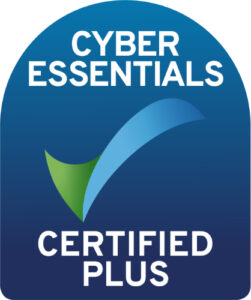Thinc insights
It’s getting more expensive for the UK’s SMEs to recruit their way through challenges. Could tech unlock more potential from your existing teams?
If you’re a small to medium-sized enterprise (SME) in the UK, you may have been awaiting April 2025 with trepidation. A raft of incoming changes are making short-term or low-wage appointments a less attractive prospect for employers, potentially cutting off a common way of meeting fluctuating demand.
While this on the surface seems like a barrier, it’s also an opportunity. It’s time to think afresh about the systems and processes your business relies upon.
In this blog, we’re going to look at what these changes mean for your business and some of the ways you can steel it against uncertainty with the strategic use of technology.
A range of tax and employment changes have been announced by the UK government for April. Specifically on employment, some of the key developments are as follows:
These changes come in addition to:
Has your business ever experienced a spike in demand or a period of rapid growth? Often, the fastest way to respond to this immediate pressure has been to recruit more people. The wage bill increases, but the work never gets any simpler to do. That’s going to be an expensive way of doing things, going forward.
While not every business will be hit hard, plenty will have winced at these announcements. The combined impact of NIC and NLW increases could see SMEs paying at least £2,100 per employee each year, according to tax advisory firm Blick Rothenburg.
Since the announcement of the Employment Rights Bill, two-thirds plan to recruit fewer staff, a survey by the Federation of Small Businesses found. Almost nine in ten plan to change their recruitment or employment practices.
Longer-term, this all means tighter margins. The Office for Budget Responsibility predicts lower wages, higher prices, and lighter profits as employers process higher costs in 2025-26.
Increasingly, it seems, SMEs – the backbone of the UK’s economy – will need to find smarter, more scalable ways of operating.
The last few years have been unpredictable for businesses. There is an opportunity for SMEs to lean into something more certain: the talent of their existing teams. To do this, they need to give them the right tools, processes and support to deliver for the business.
For the employee, this means less time spend on endless, repeated admin. For the employer, this means less money spent on recruitment, training and overheads. Should more change come, you’ll all be better prepared.
Here’s how technology can help shield your business from the economic headwinds that are forecast.
The first and most important step for any SME is to ensure that it has the right tools for the job. If your people are spending hours a month working from Excel spreadsheets, inputting, exporting and reconciling data, then ask yourself: can we do this differently?
If the heart of your business is built upon solid financial management, you’ll need a solution that’s going to scale with the changing needs of the business. Leave behind tools such as QuickBooks, Xero and Sage 50, and consider instead the modular approach of Sage Intacct.
If you need a broader view that takes on board activity from your operational teams, than an enterprise resource planning (ERP) solution such as Sage 200 or SAP Business One. The flexibility and range of addons for these solutions means it’s easy to create a solution for warehouse management, construction or intercompany operations.
Think as well about how your systems are hosted. If you run your business from an on-premises server, you could potentially save on maintenance costs by moving to a cloud or hybrid model instead. Private cloud offers reassurance if you’re concerned about storing your data in the public cloud, and can even be more sustainable – our Thinc Cloud use 100% renewable energy with a full carbon offset.
Beyond the core system, there are a whole range of business applications that add complexity to your operations, from CRM systems to e-commerce platforms. These systems historically haven’t talked to each other.
That, it transpires, has been costing you money.
Research published in the Harvard Business Review has highlighted the impact of ‘disconnection debt’ across data resources. Some of the findings include:
| Supply chain | Order creation and handling delayed by 11%
All planning exercises delayed by 10%
Customer returns delayed by 12%–18% |
| Customer service | Customer bills processed 7% slower
Customers served 34% slower than expected
Customer orders processed 15% slower |
| Finance | Lower working capital due to 16% delay in receivables
Vendor payments 20% slower than expected |
| Human resources | Hiring process was 14% slower
Training-related functions operated 8% slower |
The arrival of APIs has made it easier to connect systems – though this still requires a level of expertise that might be beyond your teams. Fortunately, we can help with this in a speedy, low-code way, thanks to our partnership with Codeless Platforms.
We’re now working with many organisations to simplify this by integrating their systems, providing the glue that binds their business together. As well as cutting time and risk of error, this allows you to automate many of the business processes that need human input.
Imagine a customer order raised on the frontline could be managed through to fulfilment without the need for any further data entry. That’s the kind of efficiency we envisage for our customers.
Automation is transforming how many businesses manage tasks and processes that previously took hours or days, whether through native features of ERP and finance tools, or through the range of integrations available. For example, processes for accounts payable and receivable are automated by Quadient, which integrates neatly with Sage Intacct and Sage 200. Tax compliance is handled automatically in Intacct and SAP Business One by Avalara.
Reporting – one of the most onerous tasks facing any team – can now be streamlined too. Roveel, for example, connects in minutes to Sage 50, Sage 200 or Xero, bringing your data to life in-depth, customisable reports, and giving you immediate insights into your business performance.
When workloads get heavier and capacity stretches, the simplest solution to help your people may be to employ more. But as quick fixes go, it’s a resource-intensive one – and it’s set to get more expensive. It may be time to think of new ways to empower your people.
Particularly in a growing business, where it’s important to have scalable technologies that serve and react to your business’ needs, you’ll need to have technical support on hand. That’s not easily recruited or retained.
Outsourcing your technical support to a managed services provider (MSP) is a straightforward way of ensuring your people have the help they need. Ideally, you want an MSP that not only has the credentials to support your systems, but also understands the whims and demands of your industry. Ultimately, the MSP should feel like an extension of your team.
Similarly, while most SMEs are aware of the threats that cyber crime poses, it’s not uncommon for cyber security to be nudged from the top of the list of immediate priorities. However, the cost of a cyber breach could be far more devastating to your business than any rise in NICs.
There is a simple and affordable way to get the basics in place for your security. It’s called Cyber Essentials – and it’s a government-backed scheme to help businesses like yours get the right posture in place with the minimum of fuss. You can even achieve Cyber Essentials Plus accreditation, which gives you a badge of reassurance that’s becoming more important to customers, particularly in the public sector. If you’re interested in achieving this, we can manage the whole process for you.
Not all of this is new – but it is all now becoming more imperative for SMEs as they consider the best ways to drive their businesses forward in unpredictable times.
“For the UK’s SMEs, making the right decisions now is more critical than it was six months ago,” says Richard Stathers, Operations Director at Thinc. “But you need to have the right data to make these decisions.
“Look at your business and ask: where are the pain points? Do you experience slow data, security vulnerabilities, inefficiencies? How does your staffing structure look, and how are your current IT services lined up?
“If your IT needs are, or are expected to become, more complex, then IT is a powerful enabler for your business – but you’re also unlikely to be able to have a specialist in every area. At Thinc, our team of trained account managers are able to take these challenges off the plate of busy SMEs. We’ll quickly find out what it is you’re paying for and right-size it to what you need.
“If you aren’t already, it’s time to start thinking about technology as part of your strategic plan. At Thinc, we’ll provide the tech and business expertise you need to deliver on your ambitions.”
If you’d value help with selecting and implementing the tools, processes and support to empower your business, we’re here to help.
Related Topics
Amplify your potential with Thinc


Enter your details into the contact form below, and one of our experts will be in touch to arrange a time to speak.
If you’re an existing customer looking for support, please e-mail servicedesk@wearethinc.com, or visit our support page where you can download our remote support apps.